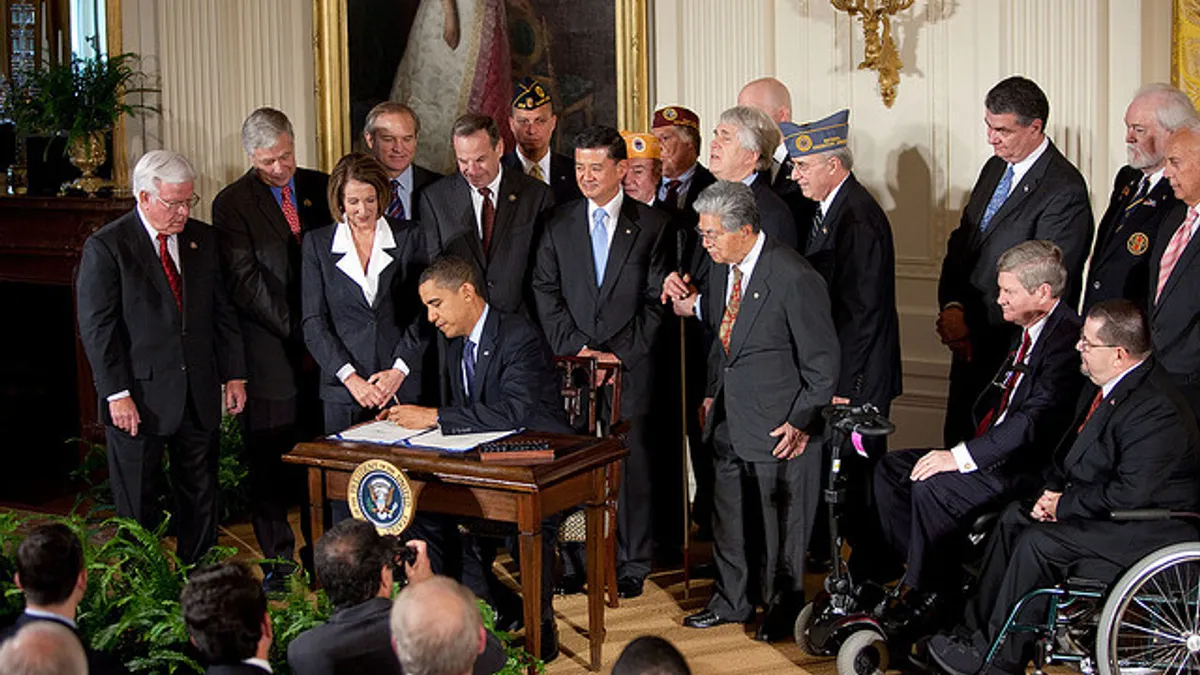Dive Brief:
- The Obama administration’s emissions standards for existing power plants, to be released June 2, may widen the definition of a power plant to restrict emissions in the larger generating and transmission system and drive greater renewables growth — but the strategy holds legal risks.
- The administration is said to be planning a required 25% emissions reduction, phased in over fifteen years, with limited cuts from 2019 to 2024 and deeper cuts throughout the system from 2024 to 2029.
- The 25% reduction target is likely only achievable with more renewable energy, better grid efficiency, and customer conservation but administration legal experts disagree about whether Section 111 of the Clean Air Act’s authority will allow standards to apply beyond the plant smokestack.
Dive Insight:
In anticipation of coal companies and their Congressional allies predicting grid instability, electricity price increases and job losses, administration officials — including EPA Administrator Gina McCarthy — have stressed the plant standards will be flexible and allow states to avoid economic impacts.
Power plants account for about 40% of the annual 2.2 billion tons of U.S. CO2.
The legal debate on “going outside the fence” — i.e., including transmission system and customer emissions in the required cuts — is seen as necessary because experts say there is no commercially viable way to get more than a 3% to 5% reduction at the smokestack.
The Natural Resources Defense Council (NRDC) has championed a wider standard that can produce a 30% emissions reduction by 2020.
EPA's Section 111 is not source specific, according to the NRDC, and was used by the EPA to limit municipal waste incinerator pollution in the 1990s without being overruled. NRDC attorneys also say recent legal decisions on the Clean Air Act show the courts will give the EPA leeway on standards.
A 25% cut over 15 years has been shown to be feasible because, according to the NRDC, even without a standard, emissions from power plants fell 16% from 2005 to 2012 from increased use of natural gas instead of coal and the slowed economy.
A more aggressive strategy is expected from the White House because climate change is becoming more central to President Obama’s legacy as he enters the last two years of his presidency.














